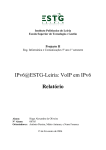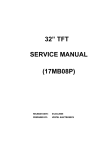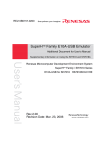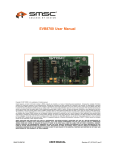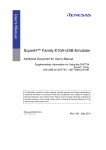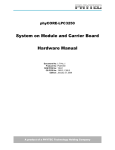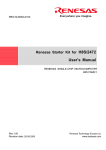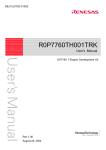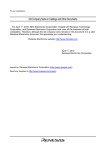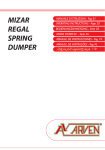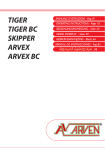Download Renesas Starter Kit 2+ for SH7670 User`s Manual
Transcript
To our customers, Old Company Name in Catalogs and Other Documents On April 1st, 2010, NEC Electronics Corporation merged with Renesas Technology Corporation, and Renesas Electronics Corporation took over all the business of both companies. Therefore, although the old company name remains in this document, it is a valid Renesas Electronics document. We appreciate your understanding. Renesas Electronics website: http://www.renesas.com April 1st, 2010 Renesas Electronics Corporation Issued by: Renesas Electronics Corporation (http://www.renesas.com) Send any inquiries to http://www.renesas.com/inquiry. Notice 1. 2. 3. 4. 5. 6. 7. All information included in this document is current as of the date this document is issued. Such information, however, is subject to change without any prior notice. Before purchasing or using any Renesas Electronics products listed herein, please confirm the latest product information with a Renesas Electronics sales office. Also, please pay regular and careful attention to additional and different information to be disclosed by Renesas Electronics such as that disclosed through our website. Renesas Electronics does not assume any liability for infringement of patents, copyrights, or other intellectual property rights of third parties by or arising from the use of Renesas Electronics products or technical information described in this document. No license, express, implied or otherwise, is granted hereby under any patents, copyrights or other intellectual property rights of Renesas Electronics or others. You should not alter, modify, copy, or otherwise misappropriate any Renesas Electronics product, whether in whole or in part. Descriptions of circuits, software and other related information in this document are provided only to illustrate the operation of semiconductor products and application examples. You are fully responsible for the incorporation of these circuits, software, and information in the design of your equipment. Renesas Electronics assumes no responsibility for any losses incurred by you or third parties arising from the use of these circuits, software, or information. When exporting the products or technology described in this document, you should comply with the applicable export control laws and regulations and follow the procedures required by such laws and regulations. You should not use Renesas Electronics products or the technology described in this document for any purpose relating to military applications or use by the military, including but not limited to the development of weapons of mass destruction. Renesas Electronics products and technology may not be used for or incorporated into any products or systems whose manufacture, use, or sale is prohibited under any applicable domestic or foreign laws or regulations. Renesas Electronics has used reasonable care in preparing the information included in this document, but Renesas Electronics does not warrant that such information is error free. Renesas Electronics assumes no liability whatsoever for any damages incurred by you resulting from errors in or omissions from the information included herein. Renesas Electronics products are classified according to the following three quality grades: “Standard”, “High Quality”, and “Specific”. The recommended applications for each Renesas Electronics product depends on the product’s quality grade, as indicated below. You must check the quality grade of each Renesas Electronics product before using it in a particular application. You may not use any Renesas Electronics product for any application categorized as “Specific” without the prior written consent of Renesas Electronics. Further, you may not use any Renesas Electronics product for any application for which it is not intended without the prior written consent of Renesas Electronics. Renesas Electronics shall not be in any way liable for any damages or losses incurred by you or third parties arising from the use of any Renesas Electronics product for an application categorized as “Specific” or for which the product is not intended where you have failed to obtain the prior written consent of Renesas Electronics. The quality grade of each Renesas Electronics product is “Standard” unless otherwise expressly specified in a Renesas Electronics data sheets or data books, etc. “Standard”: 8. 9. 10. 11. 12. Computers; office equipment; communications equipment; test and measurement equipment; audio and visual equipment; home electronic appliances; machine tools; personal electronic equipment; and industrial robots. “High Quality”: Transportation equipment (automobiles, trains, ships, etc.); traffic control systems; anti-disaster systems; anticrime systems; safety equipment; and medical equipment not specifically designed for life support. “Specific”: Aircraft; aerospace equipment; submersible repeaters; nuclear reactor control systems; medical equipment or systems for life support (e.g. artificial life support devices or systems), surgical implantations, or healthcare intervention (e.g. excision, etc.), and any other applications or purposes that pose a direct threat to human life. You should use the Renesas Electronics products described in this document within the range specified by Renesas Electronics, especially with respect to the maximum rating, operating supply voltage range, movement power voltage range, heat radiation characteristics, installation and other product characteristics. Renesas Electronics shall have no liability for malfunctions or damages arising out of the use of Renesas Electronics products beyond such specified ranges. Although Renesas Electronics endeavors to improve the quality and reliability of its products, semiconductor products have specific characteristics such as the occurrence of failure at a certain rate and malfunctions under certain use conditions. Further, Renesas Electronics products are not subject to radiation resistance design. Please be sure to implement safety measures to guard them against the possibility of physical injury, and injury or damage caused by fire in the event of the failure of a Renesas Electronics product, such as safety design for hardware and software including but not limited to redundancy, fire control and malfunction prevention, appropriate treatment for aging degradation or any other appropriate measures. Because the evaluation of microcomputer software alone is very difficult, please evaluate the safety of the final products or system manufactured by you. Please contact a Renesas Electronics sales office for details as to environmental matters such as the environmental compatibility of each Renesas Electronics product. Please use Renesas Electronics products in compliance with all applicable laws and regulations that regulate the inclusion or use of controlled substances, including without limitation, the EU RoHS Directive. Renesas Electronics assumes no liability for damages or losses occurring as a result of your noncompliance with applicable laws and regulations. This document may not be reproduced or duplicated, in any form, in whole or in part, without prior written consent of Renesas Electronics. Please contact a Renesas Electronics sales office if you have any questions regarding the information contained in this document or Renesas Electronics products, or if you have any other inquiries. (Note 1) “Renesas Electronics” as used in this document means Renesas Electronics Corporation and also includes its majorityowned subsidiaries. (Note 2) “Renesas Electronics product(s)” means any product developed or manufactured by or for Renesas Electronics. Renesas Starter Kit 2+ for SH/7670 User's Manual Renesas Single-Chip Microcomputer SH Family Rev.1.00 2008.10 Disclaimer By using this Renesas Starter Kit (RSK), the user accepts the following terms. The RSK is not guaranteed to be error free, and the entire risk as to the results and performance of the RSK is assumed by the User. The RSK is provided by Renesas on an “as is” basis without warranty of any kind whether express or implied, including but not limited to the implied warranties of satisfactory quality, fitness for a particular purpose, title and non-infringement of intellectual property rights with regard to the RSK. Renesas expressly disclaims all such warranties. Renesas or its affiliates shall in no event be liable for any loss of profit, loss of data, loss of contract, loss of business, damage to reputation or goodwill, any economic loss, any reprogramming or recall costs (whether the foregoing losses are direct or indirect) nor shall Renesas or its affiliates be liable for any other direct or indirect special, incidental or consequential damages arising out of or in relation to the use of this RSK, even if Renesas or its affiliates have been advised of the possibility of such damages. Precautions This Renesas Starter Kit is only intended for use in a laboratory environment under ambient temperature and humidity conditions. A safe separation distance should be used between this and any sensitive equipment. Its use outside the laboratory, classroom, study area or similar such area invalidates conformity with the protection requirements of the Electromagnetic Compatibility Directive and could lead to prosecution. The product generates, uses, and can radiate radio frequency energy and may cause harmful interference to radio communications. However, there is no guarantee that interference will not occur in a particular installation. If this equipment causes harmful interference to radio or television reception, which can be determined by turning the equipment off or on, you are encouraged to try to correct the interference by one or more of the following measures; • ensure attached cables do not lie across the equipment • reorient the receiving antenna • increase the distance between the equipment and the receiver • connect the equipment into an outlet on a circuit different from that which the receiver is connected • power down the equipment when not is use • consult the dealer or an experienced radio/TV technician for help NOTE: It is recommended that wherever possible shielded interface cables are used. The product is potentially susceptible to certain EMC phenomena. To mitigate against them it is recommended that the following measures be undertaken; • The user is advised that mobile phones should not be used within 10m of the product when in use. • The user is advised to take ESD precautions when handling the equipment. The Renesas Starter Kit does not represent an ideal reference design for an end product and does not fulfil the regulatory standards for an end product. ii Table of Contents Chapter 1. Preface .................................................................................................................................................. 5 Chapter 2. Purpose ................................................................................................................................................. 6 Chapter 3. Power Supply ........................................................................................................................................ 7 3.1. Requirements ............................................................................................................................................... 7 3.2. Power up Behaviour ..................................................................................................................................... 7 Chapter 4. Board Layout ......................................................................................................................................... 8 4.1. Component Layout ....................................................................................................................................... 8 4.2. Board Dimensions ........................................................................................................................................ 9 Chapter 5. Block Diagram ..................................................................................................................................... 10 Chapter 6. User Circuitry....................................................................................................................................... 12 6.1. Switches ..................................................................................................................................................... 12 6.2. LEDs ........................................................................................................................................................... 12 6.3. Serial port ................................................................................................................................................... 12 6.4. USB ............................................................................................................................................................ 13 6.5. Ethernet ...................................................................................................................................................... 14 6.5.1. Ethernet MAC Address ........................................................................................................................ 14 6.6. Debug LCD Module .................................................................................................................................... 14 6.7. Graphic Colour TFT LCD Module. .............................................................................................................. 15 6.8. Serial Sound Interface (SSI)....................................................................................................................... 17 6.9. Video Stream Interface ............................................................................................................................... 18 6.10. Option Links.............................................................................................................................................. 19 6.11. Switch Settings ......................................................................................................................................... 22 6.12. Oscillator Sources .................................................................................................................................... 24 6.13. Reset Circuit ............................................................................................................................................. 24 Chapter 7. Modes.................................................................................................................................................. 25 Chapter 8. Programming Methods ........................................................................................................................ 26 8.1. H-UDI Header for E10A .............................................................................................................................. 26 Chapter 9. Headers ............................................................................................................................................... 27 9.1. Microcontroller Headers ............................................................................................................................. 27 9.2. Application Headers ................................................................................................................................... 33 Chapter 10. Code Development ........................................................................................................................... 37 10.1. Overview................................................................................................................................................... 37 10.2. Compiler Restrictions ............................................................................................................................... 37 10.3. Breakpoint Support ................................................................................................................................... 37 10.4. Memory Map............................................................................................................................................. 38 10.5. CPLD ........................................................................................................................................................ 39 10.5.1. Local TFT Bus Clock.......................................................................................................................... 39 10.5.2. Synchronise local TFT bus to CPU bus clock.................................................................................... 39 iii 10.5.3. External buffer activation control. ...................................................................................................... 39 10.5.4. Chip Select 5 Area allocation ............................................................................................................. 40 Chapter 11. Component Placement ...................................................................................................................... 41 Chapter 12. CPLD Code Reference ..................................................................................................................... 43 12.1. CPLD Device Pinout ................................................................................................................................. 44 Chapter 13. Additional Information........................................................................................................................ 58 iv Chapter 1. Preface Cautions This document may be, wholly or partially, subject to change without notice. All rights reserved. Duplication of this document, either in whole or part is prohibited without the written permission of Renesas Technology Europe Limited. Trademarks All brand or product names used in this manual are trademarks or registered trademarks of their respective companies or organisations. Copyright © 2008 Renesas Technology Europe Ltd. All rights reserved. © 2008 Renesas Technology Corporation. All rights reserved. © 2008 Renesas Solutions Corporation. All rights reserved. Website: http://www.renesas.com/ Glossary CPLD CMOS Programmable Logic Device PC Program Counter CPU Central Processing Unit RSK+ Renesas Starter Kit+ E10A-FSK On-chip debugger module SSI Serial sound interface HEW High-performance Embedded Workshop STI Stream interface LCD Liquid crystal Display USB Universal Serial Bus LED Light Emitting Diode RAM Random Access memory ROM Read only memory TFT Thin film transistor Display 5 Chapter 2.Purpose This RSK is an evaluation tool for Renesas microcontrollers. This manual describes the technical details of the RSK hardware. The Quick Start Guide and Tutorial Manual provide details of the software installation and debugging environment. Features include: • Renesas Microcontroller Programming. • User Code Debugging. • User Circuitry such as Buttons, Switches and LEDs. • User or Example Application. • Sample peripheral device initialisation code. The RSK2+ board contains all the circuitry required for microcontroller operation. 6 Chapter 3. Power Supply 3.1. Requirements This RSK2+ operates from an external 12V (centre positive) power supply unit. A diode provides reverse polarity protection only if a current limiting power supply is used. All RSK2+ boards are supplied with an E10A debugger. All RSK2+ boards have an optional centre positive supply connector using a 2.0mm barrel power jack. Following table describes about jumper settings for power supply section. Default settings are in BOLD. Option Link Settings Reference Function 5V_SEL_1 Power supply Fitted Removed Enables 5V supply to the board Disables 5V supply to the board Related To 5V_SEL_2 Enables 12V supply connection configuration to the board 5V_SEL_2 Power supply Enables 5V supply to the board Disables 5V supply to the 5V_SEL_1 board. Enables 12V supply Configuration connection to the board. Table 3-3-1: Jumper settings-Power supply Warning The RSK2+ is neither under nor over voltage protected. Use a centre positive supply for this board. 3.2. Power up Behaviour When the RSK is purchased the RSK2+ board has the ‘Release’ or stand alone code from the example tutorial code pre-programmed into the Renesas microcontroller. On powering up the board the user LEDs will start to flash. 7 Chapter 4. Board Layout 4.1. Component Layout The following diagram shows top layer component layout of the board. Figure 4-1: Board Layout 8 4.2. Board Dimensions The following diagram gives the board dimensions and connector positions. All through hole connectors are on a common 0.1” grid for easy interfacing. Figure 4-2: Board Dimensions 9 Chapter 5. Block Diagram Figure 5-1 shows the CPU board components and their connectivity. Figure 5-1: Block Diagram 10 Figure 5-2 shows the E10A connections to the RSK2+. USB Cable E 10 A emulator Host PC JA2 JA6 User Interface Cable JA1 JA5 E 10 A CPU Board Figure 5-2: RSK2+ E10A Connections 11 Chapter 6. User Circuitry 6.1. User Switches There are four user switches located on the CPU board. The function of each button and its connection are shown in Table 6-1 Switch Functions . Switch Function Microcontroller RES When pressed, the RSK2+ microcontroller is reset. RESn, Pin W18 SW1* Connects to an IRQ input for user controls. IRQ4n, Pin N1 Note: to connect this button to the CPU please check that dip-switch SW5.1 is in (Port D pin 4) the ‘On’ position (for details refer to schematic). SW2* Connects to an IRQ line for user controls. IRQ5n, Pin N2 Note: to connect this button to the CPU please check that dip-switch SW5.3 is in (Port D, pin 5) the ‘On’ position (for details refer to schematic). SW3* Connects to an IRQ line for user controls. IRQ6n, Pin N3 Note: to connect this button to the CPU please check that dip-switch SW5.5 is in (Port D, pin 6) the ‘On’ position (for details refer to schematic). Table 6-1 Switch Functions *Refer to schematic for detailed connectivity information. 6.2. LEDs There are seven LEDs on the RSK2+ board. The green ‘POWER’ LED lights when the board is powered. The four user LEDs are connected to an IO port and will light when their corresponding port pin is set low. Two green LEDs (placed near Ethernet PHY LAN8700i device) light when Ethernet connection is established, for details refer to Chapter 6.5 Table 6-2, below, shows the User LED pin references and their corresponding microcontroller port pin connections. LED Reference Colour (As shown on silkscreen) Microcontroller Port Pin Microcontroller Pin Number LED0 Green Port E4 Y13 LED1 Orange Port E5 W13 LED2 Red Port E10 W15 LED3 Red Port E11 W16 Table 6-2 LED Ports 6.3.Serial port Serial port SCIF2 is connected to the standard on-board RS232 header (Male). Serial port SCIF1 can optionally be connected to the same RS232 header, for details please refer to schematic. Please use standard serial RS232 null-modem cable to connect RSK2+ board to a PC. 12 The default serial port connections are listed in Table 6-3. Description Microcontroller Function Fit for RS232 Port Pin Default State SCI1 Rx Spare Serial Port W14 R187 Not fitted SCI1 Tx Spare Serial Port V14 R186 Not Fitted SCI2 Rx Default serial port Y15 R169 Fitted SCI2 Tx Default serial port Y16 R180 Fitted Table 6-3 Serial Port settings The SCI1 port pins are also available on JA2 header. The SCI2 port pins are available on JA6 header. For details please refer to schematic. 6.4. USB The USB module can be used either for USB host or function (device) modes. For the USB host mode the on-board ‘USB_H’ connector must be used. For the USB function mode please use on-board ‘USB_D’ connector. Table 6-4 contains details of the signal descriptions and pin connections. Description VBUS Microcontroller Function Header Pins Pin Number Function mode: W9 J8-17 External USB connection monitor pin. Host mode: On-board USB power supply pin. USB_D+ USB data I/O pin Y9 Not available USB_D- USB data I/O pin Y8 Not available USB_X1 USB clock pin W12 J8-23* USB_X2 USB clock pin Y12 J8-24* REFIN Reference input Y11 - Table 6-4 USB module settings *SW4.1 and SW4.3 must be in the ‘On’ position while SW4.2 in OFF position for USB_H mode. SW4.1 and SW4.3 must be in the ‘OFF’ position while SW4.2 in ON position for USB_D (function) mode. For details please refer to Table 6-16. The host power is supplied by a controlled 500mA MOSFET switch with overload protection. IRQ7n is connected tot his device to provide overload sensing for devices connected to the host USB port. The device is self resetting when the overload is removed. When this board is connected as a function device the VBUS signal is connected to a logic device input. To protect this device from having a voltage applied when the main power is turned off on the PCB a diode is fitted in the power supply. This will try to power the board from the connected host device. It is likely that this will shut down the connected host unless it is in high power mode. Please ensure that when developing USB function applications that the USB cable is removed when removing power form this product. Operation is not expected when the product is powered from the function USB port. 13 The single USB channel is split between the Host and Function connectors using a USB Mux Switch. Care is required when routing Hi-Speed USB signals on your applications. On switching SW4-3 the USB signals are routed to the other connector and disconnected form the current selection. 6.5.Ethernet The Ethernet module conforms to the Ethernet or IEEE802.3 media access control (MAC) standard. Ethernet controller is connected to the direct memory access controller for Ethernet controller (E-DMAC) and carries out high-speed data transfer to and from the memory. In addition the Ethernet controller is connected to on-board SMSC LAN8700i physical layer (PHY) chip enabling it to perform transmission and reception of Ethernet frames. The hardware address of the LAN8700i is predefined as ‘0x1F’. There are two Ethernet LEDs on the RSK2+ board and two LEDs on the on-board Ethernet RJ-45 connector. The on-board green SPEED LED lights when 100 Mbit connection is established between the PHY device and any other connected Ethernet device. The green DUPLEX LED lights when Full-Duplex connection is established between the PHY device and any other connected Ethernet device. The embedded Ethernet connector green LED lights when there is a link with the other devices. The yellow LED lights when there is a network activity. Table 6-5 contains details of the signal descriptions and pin connections. LED Reference Colour (As shown on silkscreen) LAN8700i Port Pin LAN8700i Pin Number SPEED Green SPEED100_PHYAD0 9 DUPLEX Green FDUPLEX_PHYAD3 12 Ethernet connector: Yellow LED Yellow ACTIVITY_PHYAD2 11 Ethernet connector: Green LED Green LINK_PHYAD1 10 Table 6-5 Ethernet module settings 6.5.1. Ethernet MAC Address This board contains an SPI EEPROM device (U29). This device has been pre-programmed with an individual MAC address for the board. The first six locations in the device contain the MAC address in hexadecimal numbers starting with the most significant byte. The rest of this EEPROM device is available for customer use. However care must be taken to store the existing value in the device before it is erased. 6.6.Debug LCD Module A debug LCD module is embedded on the RSK2+ board. The debug LCD module uses a 4 bit interface to reduce the CPU pin allocation. The contrast control is set by a resistor on the supplied display module. The LCD module must be connected to the CPU pins by turning ON SW6 dip-switches: 7 and 9. SW6 switches 8 and 10 must be turned off. For more details please refer to schematic. Table 6-6 shows the LCD pin allocation and CPU signal names used to handle the LCD. 14 LCD LCD LCD pin name / CPU port CPU pin LCD Pin LCD pin name / CPU port Pin 1 Ground 3 No Connection 5 R/W (Wired to Write only) 7 Ground CPU pin 2 5V Only 4 DLCDRS / PA24 D2 6 DLCDE + 100k pull down to ground / PB4 A3 No Connection 8 No connection 9 No Connection 10 No connection 11 DLCDD4 / PD0DLCD4 R3 12 DLCDD5 / PD2 P1 13 DLCDD6 / PD2DLCD6 P2 14 DLCDD7 / PD3 P3 Pulled down to Ground Table 6-6 Debug LCD Module Connections The Debug LCD module can only be used when A24 and DACK1 are not used. 6.7. Graphic Colour TFT LCD Module. The RSK2+ board is equipped with a SSD1906R TFT LCD module controller and two headers for TFT LCD modules. The SSD1906R controller has 256K Embedded Display SRAM and can support colour and monochrome TFT displays. TFT modules can be inserted in the H_LCD connector (for the Hitachi LCD modules) or G_LCD connector (for other TFT modules). An adaptor board may be required for other TFT modules. The TFT controller fitted can support driving panels up to 18 bits in colour depth. When using panels of 18 bit depth with 16 bit data it is necessary to connect Red0 and Blue0 to ground. To support these panels we have provided jumper J9 which will connect these signals to Logic 0 when fitted. Connections are provided to support an alternate TFT LCD driver IC (Epson S1D13A04) these connections are not verified and information is provided for reference only. Customers may use this alternate device at their own risk. By default the on-board backlight voltage generator (U24) is enabled and it is configured to drive a string of up to 6 series LEDs with a current of 16.2mA. If the User needs to dim a LCD backlight or disable it, R92 resistor may be fitted. For an appropriate value of the resistor please refer to datasheet of backlight voltage generator (MAX1599). The connections for the TFT LCD Modules are listed in Table 6-7 and Table 6-8. 15 H_LCD (For Hitachi LCD) Pin CPU board Signal Name Device Pin Pin CPU board Signal Name Device Pin 1 GROUND 2 GROUND 3 GROUND 4 LCD_VCC 5 LCD_VCC 6 LCD_VCC 7 BLCD_DATA0 8 BLCD_DATA1 9 BLCD_DATA2 10 BLCD_DATA3 11 BLCD_DATA4 12 BLCD_DATA5 13 BLCD_DATA6 14 BLCD_DATA7 15 BLCD_DATA8 16 BLCD_DATA9 17 BLCD_DATA10 18 BLCD_DATA11 19 BLCD_DATA12 20 BLCD_DATA13 21 BLCD_DATA14 22 BLCD_DATA15 23 BLCD_DATA16 24 BLCD_DATA17 25 BLCD_DOTCLK 26 BLCD_HSYNC 27 BLCD_VSYNC 28 BSSCS B4 29 BSSCK V15 30 BSSO V14 31 RXD1 W14 32 BLCD_RESn W18 33 GROUND 34 VLED + 35 VLED + 36 VLED - 37 VLED - 38 GROUND 39 GROUND Table 6-7 Hitachi LCD Module Connections 16 G_LCD (For Generic LCD) Pin CPU board Signal Name Device Pin Pin CPU board Signal Name Device Pin 1 BOARD_5V 2 BOARD_5V 3 LCD_VCC 4 LCD_VCC 5 VLED+ 6 VLED- 7 BLCD_DATA1 8 BLCD_DATA2 9 BLCD_DATA3 10 BLCD_DATA4 11 BLCD_DATA5 12 BLCD_DATA6 13 BLCD_DATA7 14 BLCD_DATA8 15 BLCD_DATA9 16 BLCD_DATA10 17 BLCD_DATA11 18 BLCD_DATA13 19 BLCD_DATA14 20 BLCD_DATA15 21 BLCD_DATA16 22 BLCD_DATA17 23 BLCD_DON 24 BLCD_HSYNC 25 BLCD_DOTCLK 26 BLCD_MDISP 27 BLCD_VSYNC 28 BCLD_CLK (LCD CLK) 29 BSSCK 30 RXD1 W14 31 BSSO 32 BSSCS B4 33 BLCD_RESn 34 GROUND 35 BLCD_VCPWC 36 BLCD_VEPWC 37 GROUND 38 GROUND 39 GROUND 40 GROUND V15 W18 145 Table 6-8 Generic LCD Module Connections 6.8. Serial Sound Interface (SSI). The RSK2+ board is equipped with Serial Sound Interface (SSI). The SSI is a module designed to send or receive an audio data stream with various devices. The ‘SSI’ header is accessible on the RSK2+ board. Please see the microcontroller hardware manual for more details. J2 Pin Circuit Net Name 1 Board_5V 3 SSI_SCK1 5 SSI_DATA1 7 GROUND Device Pin Pin Circuit Net Name Device Pin 2 Board_VCC W17 4 SSI_WS1 V12 V13 6 AUDIOCLK V16 Table 6-9 Serial sound interface Connections 17 6.9. Video Stream Interface The RSK2+ board is equipped with Video Stream Interface header ‘STI’. For details please refer to the SH/7670 hardware manual. STI connector Pin CPU board Signal Name Device Pin Pin CPU board Signal Name Device Pin 1 ST0_CLKIN R19 2 ST_CLKOUT Y17 3 ST0_D0 N20 4 ST0_D2 M18 5 ST0_D4 M20 6 ST0_D6 L19 7 NC 8 GROUND 9 GROUND 10 NC 11 ST0_D7 L20 12 ST0_D5 L18 13 ST0_D3 M19 14 ST0_D1 N18 15 ST0_SYC N19 16 ST0_VLD P20 17 ST0_PWM P18 18 ST0_REQ P19 19 ST0_VCO_CLKIN R20 20 GROUND Table 6-10 Video stream interface connections 18 6.10. Option Links Table 6-11 below describes the function of the option links contained on this RSK2+ board and associated with Serial Port Configuration. The default configuration is indicated by BOLD text. Serial Port Option Link Settings Reference R165 R169 R170 R180 R179 R181 R183 R186 Function Fitted Not fitted Related To Serial Port Disables RS232 Serial Enables RS232 Serial configuration Transceiver Transceiver Serial Port Connects serial port SCIF2 (Rx) to Disconnects serial port SCIF2 R179, R180, Configuration serial receiver pin. (Rx) from serial receiver pin. R170 Serial Port Connects serial port SCIF2 (Rx) to Disconnects serial port SCIF2 R179, R180, Configuration JA6 pins. (Rx) from JA6 pins. R169 Serial Port Connects serial port SCIF2 (Tx) to Disconnects serial port SCIF2 (Tx) R179, R169, Configuration serial transmitter pin. from serial transmitter pin. R170 Serial Port Connects serial port SCIF2 (Tx) to Disconnects serial port SCIF2 R169, R180, Configuration JA6 pins. (Tx) port from JA6 pins. R170 Serial Port Connects serial port SCIF1 (Tx) to Disconnects port SCIF1 (Tx) R186 Configuration D-type connector secondary from D-type connector channel. secondary channel. Serial Port Connects serial port SCIF1 (Rx) to Disconnects port SCIF1 (Rx) Configuration D-type connector secondary from D-type connector channel. secondary channel. Serial Port Connects serial port SCIF1 (Tx) to Disconnects serial port SCIF1 Configuration secondary serial transmitter pin. (Tx) from secondary serial R187 R181 transmitter pin. R187 Serial Port Connects serial port SCIF1 (Rx) to Disconnects serial port SCIF1 Configuration secondary serial receiver pin. (Rx) from secondary serial receiver pin. Table 6-11 Serial port configuration links. 19 R183 Table 6-12 below describes the function of the option links associated with power source. The default configuration is indicated by BOLD text. Power Supply Option Link Settings Reference Function 5V_SEL_1 RSK2+ board Both jumper blocks are to be fitted to Both jumper blocks are to be R16, R22, power supply override the input regulator and allow removed to allow an external 5V_SEL_2 External power an external 5V supply to power the 7-12V supply to power the R16, R22, supply board. board. 5V_SEL_1 Power source Normal operation J1_2 provides the option to 5V_SEL_2 R191 Fitted Not fitted Related To measure the current. *WARNING* R158 Power source Normal operation J3_3 provides the option to measure the current. *WARNING* R86 External power Routes JA1-3 pin to on-board 3V3. Disable 3V3 output to JA1-3 pin R171,R172 Routes JA1-1 pin to on-board 5V. Disable 5V output to JA1-1 pin 5V_SEL_1, supply R22 External power supply R92 5V_SEL_2 LCD backlight Disables or dims TFT LCD backlight Enables 16.2mA output for TFT LCD backlight Table 6-12 Power configuration links. *WARNING: All power connections with provision for current measurement must remain connected while the power is on or damage to the connected devices is highly likely. 20 Table 6-13 below describes the function of the option links associated with clock configuration. The default configuration is indicated by BOLD text. Clock Option Link Settings Reference Function Fitted Not fitted R62 PHY clock source Load resistor for a crystal Not fitted R63 PHY clock source Connects on-board oscillator for Can be replaced with damping the PHY device resistor if required. R157 USB clock source Load resistor for a crystal Not fitted R146 USB clock source On-board oscillator is used External clock source is used Related To R144, R145, R147 R147 USB External clock On-board Clock Source is used External clock source is used R144, R145, source R144 USB clock source R146 On-board oscillator is used External clock source is used R146, R145, R147 R145 USB External clock On-board Clock Source is used External clock source is used R144, R146, source R147 R137 CPU clock source Load resistor for a crystal Not fitted R139 CPU External clock External clock source is used On-board Clock Source is used R135, R136, source R138 CPU clock source R138 On-board oscillator is used External clock source is used R135, R136, R139 R136 CPU External clock On-board Clock Source is used External clock source is used R135, R139, source R135 CPU clock source R138 On-board oscillator is used External clock source is used R139, R136, R138 Table 6-13 Clock configuration links. Table 6-14 below describes the function of the option links associated with USB. The default configuration is indicated by BOLD text. Option Link Settings Reference R184 R194 Function Fitted Not fitted USB Host USB Host connector shield is USB Host connector shield is connector shield grounded unconnected USB Device USB Device connector shield is USB Device connector shield is connector shield grounded unconnected Table 6-14 USB links. 21 Related To - 6.11.DIP Switch Settings DIP Switch State DIP Switch SW4 State SW5 DIP State DIP Switch Switch SW6 SW7 State 1 ON 1 OFF 1 OFF 1 OFF 2 OFF 2 ON 2 ON 2 ON 3 ON 3 OFF 3 OFF 3 ON 4 ON 4 ON 4 ON 4 OFF 5 ON 5 OFF 5 OFF 5 ON 6 ON 6 ON 6 ON 6 OFF 7 ON 7 OFF 7 ON 7 ON 8 ON 8 ON 8 OFF 8 OFF 9 OFF 9 OFF 9 ON 9 ON 10 OFF 10 ON 10 OFF 10 OFF Table 6-15 Default DIP Switch Settings Switch (SW4) ID 1 Function Action On Selection of USB VBUS Flag 2 3 Select between USB Host and Function Action Off USB Host connector connected to USB Host connector VBUS flag VBUS disconnected USB Function connector USB Function connector VBUS flag connected to VBUS disconnected USB Host connector is selected. USB Function connector is selected. Connectors. 4 TFT Controller CF4 Little Endian bus interface Big Endian bus interface 5 TFT Controller CF6 CF6 = 0 *See Table 6-17 CF6 = 1 *See table Table 6-17 6 TFT Controller CF7 CF7 = 0 *See Table 6-17 CF7 = 1 *See table Table 6-17 7 Chip Select 5 (Expansion Header) Selection 0 CS5_SEL0 = 0 *See Table 10-2 CS5_SEL0 = 1 * See Table 10-2 8 Chip Select 5 (Expansion Header) Selection 1 CS5_SEL1 = 0 *See Table 10-2 CS5_SEL1 = 1 * See Table 10-2 9 Flash Protection (Boot Flash) Flash protection On Flash Protection Off 10 Flash Protection (User Flash) Flash Protection On Flash Protection Off Table 6-16 SW4 Functions 22 CF6 CF7 CLKI to BCLK Divide Ratio 0 0 1:1 0 1 2:1 1 0 3:1 1 1 4:1 Table 6-17 SW4-5+6 Function Switch (SW5) ID 1 Function Multiplexed Pin: ST0D0 and IO0 2 3 Multiplexed Pin: ST0D1 and IO1 4 5 Multiplexed Pin: ST0D2 and IO2 6 7 Multiplexed Pin: ST0D3 and IO3 8 9 Multiplexed Pin: ST0D4 and IO4 10 Action On Action Off ST0_D0 Connected ST0_D0 Disconnected IO0 Connected IO0 Disconnected ST0_D1 Connected ST0_D1 Disconnected IO1 Connected IO1 Disconnected ST0_D2 Connected ST0_D2 Disconnected IO2 Connected IO2 Disconnected ST0_D3 Connected ST0_D3 Disconnected IO3 Connected IO3 Disconnected ST0_D4 Connected ST0_D4 Disconnected IO4 Connected IO4 Disconnected Table 6-18 SW5 Functions Switch (SW6) ID 1 Function Multiplexed Pin: ST0_D5 and IO5 2 3 Multiplexed Pin: ST0_D6 and IO6 4 5 Multiplexed Pin: ST0_D7 and IO7 6 7 Multiplexed Pin: DLCDE and DACK1 8 9 10 Multiplexed Pin: DLCDRS and A24 Action On Action Off ST0_D5 Connected ST0_D5 Disconnected IO5 Connected IO5 Disconnected ST0_D6 Connected ST0_D6 Disconnected IO6 Connected IO6 Disconnected ST0_D7 Connected ST0_D7 Disconnected IO7 Connected IO7 Disconnected DLCDE Connected DLCDE Disconnected DACK1 Connected DACK1 Disconnected DLCDRS Connected DLCDRS Disconnected A24 Connected A24 Disconnected Table 6-19 SW6 Functions 23 Switch (SW7) ID 1 Function Action On Multiplexed Pin HIFMD and A25. HIFMD is Action Off Pulled high Disconnected Pulled Low Disconnected CS5C is connected to signal CS5C is not connected to signal CS5Cn_CS5Dn on JA3 CS5Cn_CS5Dn on JA3 CS5C is connected to signal CS5C is not connected to signal CS5Cn_CS5Dn on JA3 CS5Cn_CS5Dn on JA3 WAITn Connected WAITn Disconnected SDA Connected SDA Disconnected CS5n Connected CS5n Disconnected TEND1 Connected TEND1 Disconnected CS6n Connected CD6n Disconnected DREQ1 Connected DREQ1 Disconnected sampled at reset and determines if this is a host or 2 slave device. If both switches are off operation is not guaranteed. 3 4 5 Selection of CS5C Selection of CS5D Multiplexed Pin: WAITn and SDA 6 7 Multiplexed Pin: CS5n and TEND1 8 9 Multiplexed Pin: CS6n and DREQ1 10 Table 6-20 SW7 Functions 6.12. Oscillator Sources Crystal oscillators are fitted on the RSK2+ and used to supply the main clock input to the Renesas microcontroller. Please see the table below for details of the oscillators that are fitted and alternative footprints provided on this RSK2+: Component Crystal (X1), 25 MHz Main clock. Crystal (X2), 48 MHz USB module. Crystal (X3), 25 MHz Ethernet module. Table 6-21 Oscillators / Resonators 6.13.Reset Circuit The CPU Board includes μP Supervisory Circuit with Manual Reset ability. The reset timeout period is set as 15 ms. Please check the reset requirements carefully to ensure the reset circuit on the user’s board meets all the reset timing requirements. 24 Chapter 7. Modes This CPU incorporates a host interface (HIF) for use in high-speed transfer of data between external devices which cannot utilize the system bus. The HIF allows external devices to read from and write to 4 Kbytes (2 Kbytes x 2 banks) of the on-chip RAM exclusively for HIF use (HIFRAM) within this CPU, in 32-bit units. Using HIFRAM, the HIF also supports HIF boot mode allowing this CPU to be booted. In HIF boot mode, this CPU can be booted from HIFRAM by an external device storing the instruction code in HIFRAM. The HIF’s ‘HOST Interface’ header is accessible on the RSK2+ board. For the details please refer to the SH/7670 Group Hardware Manual. 25 Chapter 8. Programming Methods The RSK2+SH7670 board can be programmed using E10A-FSK supplied with the kit. Following header is provided to download and debug the user code – H-UDI. 8.1. H-UDI Header for E10A This is a 14 pin header used to download and debug the user program. This header provides H-UDI interface for user debugging. Limited Event conditions in ROM and unlimited Breakpoints in RAM are supported. The AUD trace function is not supported on this interface. 26 Chapter 9. Headers 9.1. Microcontroller Headers Table 9-1 to Table 9-8 show the microcontroller pin headers and their corresponding microcontroller connections. The header pins connect directly to the microcontroller pin unless otherwise stated. J1 Pin Circuit Net Name Device Pin Circuit Net Name Pin Device Pin 1 A(17) A1 2 A(19) B1 3 A(0) A2 4 A(18) B2 5 DLCDE_DACK1 A3 6 CS5n_TEND1 B3 7 WAITn_SDA A4 8 IOCS B4 9 CS4n A5 10 RDn B5 11 DQM1 A6 12 BSn B6 13 D(9) A7 14 D(8) B7 15 D(12) A8 16 D(10) B8 17 D(15) A9 18 D(14) B9 19 D(5) A10 20 D(6) B10 21 D(2) A11 22 D(3) B11 23 A(16) A12 24 D(0) B12 25 A(13) A13 26 A(14) B13 27 A(10) A14 28 A(11) B14 29 A(7) A15 30 A(8) B15 31 A(4) A16 32 A(5) B16 33 A(1) A17 34 A(2) B17 35 SDRASn A18 36 CS3n B18 37 SDCASn A19 38 GROUND B19 39 GROUND A20 40 SDCKE B20 Table 9-1: J1 27 J2 Pin Circuit Net Name Device Pin Circuit Net Name Pin Device Pin 1 A(22) C1 2 HIFMD_A25 D1 3 A(21) C2 4 DLCDRS_A24 D2 5 A(20) C3 6 A(23) D3 7 CS6n_DREQ1 C4 8 GROUND D4 9 SCL C5 10 GROUND D5 11 CS0n C6 12 UC_VCCQ D6 13 DQM0 C7 14 UC_VCC D7 15 D(11) C8 16 GROUND D8 17 D(13) C9 18 UC_VCCQ D9 19 D(7) C10 20 UC_VCCQ D10 21 D(4) C11 22 GROUND D11 23 D(1) C12 24 GROUND D12 25 A(15) C13 26 UC_VCC D13 27 A(12) C14 28 GROUND D14 29 A(9) C15 30 UC_VCCQ D15 31 A(6) C16 32 GROUND D16 33 A(3) C17 34 GROUND D17 35 GROUND C18 36 DQM3 D18 37 WEn C19 38 DQM2 D19 39 CKIO C20 40 D(25) D20 Table 9-2: J2 28 J3 Pin Circuit Net Name Device Pin Circuit Net Name Device Pin Pin 1 LNKSTA E1 2 PIN_E2 E2 3 TX-CLK F1 4 MDIO F2 5 MII_TXD3 G1 6 TX-ER G2 7 MII_TXD0 H1 8 MII_TXD1 H2 9 RX-CLK J1 10 COL J2 11 MII_RXD3 K1 12 RX-DV K2 13 MII_RXD0 L1 14 MII_RXD1 L2 15 NC - 16 ASEMDn M2 17 IRQ4n N1 18 IRQ5n N2 19 DLCDD5 P1 20 DLCDD6 P2 21 HIF_D14 R1 22 HIF_D15 R2 23 HIF_D11 T1 24 HIF_D12 T2 Table 9-3: J3 J4 Pin Circuit Net Name Device Pin Circuit Net Name Pin Device Pin 1 PIN_E3 E3 2 GROUND E4 3 MDC F3 4 UC_VCCQ F4 5 TX-EN G3 6 GROUND G4 7 MII_TXD2 H3 8 UC_VCC H4 9 CRS J3 10 GROUND J4 11 RX-ER K3 12 UC_VCCQ K4 13 MII_RXD2 L3 14 UC_VCCQ L4 15 IRQ7n M3 16 GROUND M4 17 IRQ6n N3 18 GROUND N4 19 DLCDD7 P3 20 UC_VCC P4 21 DLCDD4 R3 22 UC_VCC R4 23 HIF_D13 T3 24 GROUND T4 Table 9-4: J4 29 J5 Pin Circuit Net Name Device Pin Circuit Net Name Pin Device Pin 1 GROUND E17 2 D(24) E18 3 UC_VCCQ F17 4 D(27) F18 5 UC_VCCQ G17 6 D(31) G18 7 UC_VCCQ H17 8 UC_VCCQ H18 9 GROUND J17 10 GROUND J18 11 UC_VCC K17 12 GROUND K18 13 GROUND L17 14 ST0D5_IO5 L18 15 GROUND M17 16 ST0D2_IO2 M18 17 UC_VCCQ N17 18 ST0D1_IO1 N18 19 GROUND P17 20 ST0_PWM P18 21 UC_VCC R17 22 WDTOVFn R18 23 GROUND T17 24 GROUND T18 Table 9-5: J5 J6 Pin Circuit Net Name Device Pin Circuit Net Name Pin Device Pin 1 D(26) E19 2 D(28) E20 3 D(29) F19 4 D(30) F20 5 D(23) G19 6 D(22) G20 7 D(21) H19 8 D(20) H20 9 D(19) J19 10 D(18) J20 11 D(17) K19 12 D(16) K20 13 ST0D6_IO6 L19 14 ST0D7_IO7 L20 15 ST0D3_IO3 M19 16 ST0D4_IO4 M20 17 ST0_SYC N19 18 ST0D0_IO0 N20 19 ST0_REQ P19 20 ST0_VLD P20 21 ST0_CLKIN R19 22 ST0_VCO_CLKIN R20 23 MD_BW T19 24 ASEBRKn T20 Table 9-6: J6 30 J7 Pin Circuit Net Name Device Pin Circuit Net Name Pin Device Pin 1 HIF_D9 U1 2 HIF_D7 V1 3 HIF_D10 U2 4 GROUND V2 5 GROUND U3 6 HIF_D4 V3 7 GROUND U4 8 HIF_D1 V4 9 GROUND U5 10 HIF_RS V5 11 UC_VCCQ U6 12 HIF_RDY V6 13 GROUND U7 14 GROUND V7 15 GROUND U8 16 GROUND V8 17 DV12 U9 18 GROUND V9 19 UV12 U10 20 GROUND V10 21 AV12 U11 22 AGND V11 23 UC_VCC U12 24 SSI_WS1 V12 25 GROUND U13 26 SSI_DATA1 V13 27 UC_VCCQ U14 28 TXD1 V14 29 UC_VCCQ U15 30 SCK1 V15 31 GROUND U16 32 AUDIOCLK V16 33 GROUND U17 34 TCK V17 35 MD_CLK1 U18 36 TDI V18 37 NMI U19 38 MD_CLK0 V19 39 NC - 40 CON_EXTAL V20 Table 9-7: J7 31 J8 Pin Circuit Net Name Device Pin Circuit Net Name Pin Device Pin 1 GROUND W1 2 HIF_D8 Y1 3 HIF_D6 W2 4 HIF_D5 Y2 5 HIF_D3 W3 6 HIF_D2 Y3 7 HIF_D0 W4 8 HIF_CSn Y4 9 HIF_WRn W5 10 HIF_RDn Y5 11 HIF_DREQ W6 12 HIF_INTn Y6 13 HIF_EBL W7 14 DV33 Y7 15 GROUND W8 16 NC (USB D-) 17 VBUS_IN W9 18 NC (USB D+) 19 AGND V11 20 AV33 21 GROUND W11 22 NC 23 CON_USB_X1 W12 24 CON_USB_X2 Y12 25 LED1 W13 26 LED0 Y13 27 RXD1 W14 28 SCK2 Y14 29 LED2 W15 30 RXD2 Y15 31 LED3 W16 32 TXD2 Y16 33 SSI_SCK1 W17 34 ST_CLKOUT Y17 35 RESn W18 36 TRSTn Y18 37 TDO W19 38 TMS Y19 39 CON_XTAL W20 40 NC Table 9-8: J8 32 Y10 9.2. Application Headers Table 9-9 and Table 9-13 below show the standard application header connections. JA1 Pin Generic Header Name CPU board Device Signal Name Pin Pin Generic Header Name CPU board Device Signal Name Pin 1 5V CON_5V 2 0V GROUND 3 3V3 CON_3V3 4 0V GROUND 5 AVcc NC 6 AVss CON_AVSS 7 AVref NC 8 ADTRG NC 9 AD0 NC 10 AD1 NC 11 AD2 NC 12 AD3 NC 13 DAC0 NC 14 DAC1 NC 15 IO_0 IO_0 N20 16 IO_1 IO_1 N18 17 IO_2 IO_2 M18 18 IO_3 IO_3 M19 19 IO_4 IO_4 M20 20 IO_5 IO_5 L18 21 IO_6 IO_6 L19 22 IO_7 IO_7 L20 23 IRQ3 IRQ7n M3 24 IIC_EX NC 25 IIC_SDA SDA A4 26 IIC_SCL SCL * Shared pins. Please refer to schematic. Table 9-9: JA1 Standard Generic Header 33 C5 JA2 Pin Generic Header Name CPU board Device Signal Name Pin Pin Generic Header Name CPU board Device Signal Name Pin 1 RESn RESn W18 2 EXTAL CON_EXTAL 3 NMIn NMI U19 4 Vss1 GROUND 5 WDT_OVF WDTOVFn R18 6 SCIaTX TxD1 V14 7 IRQ0 IRQ4n R3* 8 SCIaRX RxD1 W14 9 IRQ1 IRQ5n P1* 10 SCIaCK SCK1 V15 11 UD NC 12 CTSRTS NC 13 Up NC 14 Un NC 15 Vp NC 16 Vn NC 17 Wp NC 18 Wn NC 19 TMR0 NC 20 TMR1 NC 21 TRIGa NC 22 TRIGb NC 23 IRQ2 IRQ6n 24 TRISTn NC 25 - NC 26 - NC P2* V20** * Shared pins. Please refer to schematic. ** Option link. Table 9-10: JA2 Standard Generic Header JA5 Pin Generic Header Name CPU board Device Signal Name Pin Pin Generic Header Name CPU board Device Signal Name Pin 1 AD4 NC 2 AD5 NC 3 AD6 NC 4 AD7 NC 5 CAN1TX NC 6 CAN1RX NC 7 CAN2TX NC 8 CAN2RX NC 9 AD8 NC 10 AD9 NC 11 AD10 NC 12 AD11 NC 13 TIOC0A NC 14 TICO0B NC 15 TIOC0C NC 16 M2_TRISTn NC 17 TCLKC NC 18 TCLKD NC 19 M2_Up NC 20 M2_UN NC 21 M2_Vp NC 22 M2_Vn NC 23 M2_Wp NC 24 M2_Wn NC Table 9-11: JA5 Standard Generic Header 34 JA6 Pin Generic Header Name CPU board Device Signal Name Pin Pin Generic Header Name CPU board Device Signal Name Pin 1 DREQ DREQ1 C4* 2 DACK DACK1 3 TEND TEND1 B3* 4 STBYn NC 5 RS232TX RS232TX ** 6 RS232RX RS232RX ** 7 SCIbRX RxD2 Y15 8 SCIbTX TXD2 Y16 9 SCIcTX NC 10 SCIbCK SCK2 Y14 11 SCIcCK NC 12 SCIcRX NC 13 Reserved NC 14 Reserved NC 15 Reserved NC 16 Reserved NC 17 Reserved NC 18 Reserved NC 19 Reserved NC 20 Reserved NC 21 Reserved NC 22 Reserved NC 23 Reserved NC 24 Reserved NC * Shared pins. Please refer to schematic. ** Option link. Table 9-12: JA6 Standard Generic Header 35 A3 JA3 Pin Generic Header Name CPU board Device Signal Name Pin Pin Generic Header Name CPU board Device Signal Name Pin 1 A0 BXA(0) * 2 A1 BXA(1) * 3 A2 BXA(2) * 4 A3 BXA(3) * 5 A4 BXA(4) * 6 A5 BXA(5) * 7 A6 BXA(6) * 8 A7 BXA(7) * 9 A8 BXA(8) * 10 A9 BXA(9) * 11 A10 BXA(10) * 12 A11 BXA(11) * 13 A12 BXA(12) * 14 A13 BXA(13) * 15 A14 BXA(14) * 16 A15 BXA(15) * 17 D0 BXD(0) * 18 D1 BXD(1) * 19 D2 BXD(2) * 20 D3 BXD(3) * 21 D4 BXD(4) * 22 D5 BXD(5) * 23 D6 BXD(6) * 24 D7 BXD(7) * 25 RDn BXRDn * 26 WR BXWRn * 27 CS0n CS5An * 28 CS1n CS5Bn * 29 D8 BXD(8) * 30 D9 BXD(9) * 31 D10 BXD(10) * 32 D11 BXD(11) * 33 D12 BXD(12) * 34 D13 BXD(13) * 35 D14 BXD(14) * 36 D15 BXD(15) * 37 A16 BXA(16) * 38 A17 BXA(17) * 39 A18 BXA(18) * 40 A19 BXA(19) * 41 A20 BXA(20) * 42 A21 BXA(21) * 43 A22 BXA(22) * 44 SDCLK BXCKIO * 45 CS2n CS5Cn_CS5Dn * 46 ALE BXBSn * 47 WRHn BXWR1n * 48 WRLn BXWR0n * 49 - NC - 50 - NC - * Buffered input/output signals. Table 9-13: JA3 Standard Generic Header 36 Chapter 10. Code Development 10.1. Overview Note: For all code debugging using Renesas software tools, the RSK2+ board must be connected to a PC USB port via an E10A. An E10A FSK is supplied with the RSK2+ product. 10.2. Compiler Restrictions The compiler supplied with this RSK2+ is fully functional for a period of 60 days from first use. After the first 60 days of use have expired, the compiler will default to a maximum of 256k code and data. To use the compiler with programs greater than this size you need to purchase the full tools from your distributor. Warning: The protection software for the compiler will detect changes to the system clock. Changes to the system clock back in time may cause the trial period to expire prematurely. 10.3.Breakpoint Support The support of breakpoints is limited. Breakpoints may be enabled for RAM memory only. Instead of using breakpoints the User should use ‘Eventpoints’. ‘Eventpoints’ are available for the both RAM and ROM memories. Up to 11 ‘Eventpoints’ can be set into the user source code. Double clicking in the ’Event’ column in the code sets the ‘Eventpoint’. ‘Eventpoints’ will remain unless they are double clicked to remove them. 37 10.4. Memory Map In the architecture, this CPU has a 32-bit address space, which is divided into cache-enabled, cache-disabled, and on-chip spaces (on-chip RAM, on-chip peripheral modules, and reserved areas) according to the upper bits of the address. Table 10-1 below shows the global memory map. Internal Address Range Description Addressed Cache Area Device 0x00000000 to 0x03FFFFFF CS0 - Normal space containing 4MB Flash as 2Mx16bits Boot Flash 0x04000000 to 0x07FFFFFF Reserved area Reserved 0x08000000 to 0x0BFFFFFF Reserved area Reserved 0x0C000000 to 0x01FFFFFF CS3 - 32MB SDRAM organised as 8Mx32bits SDRAM 0x02000000 to 0x0FFFFFFF Reserved area Reserved 0x10000000 to 0x107FFFFF CS4 - Normal space containing 8MB Flash as 2Mx32bits User Flash 0x10800000 to 0x13FFFFFF Reserved area Reserved 0x14000000 to 0x17FFFFFF CS5 Normal space, See Table 10-2 External Interface 0x18000000 to 0x1BFFFFFF CS6 Normal space, See TFT controller data sheet TFT Controller 0x1C000000 to 0x1FFFFFFF Other Reserved area Reserved 0x20000000 to 0x23FFFFFF CS0 - Normal space containing 4MB Flash as 2Mx16bits Boot Flash 0x24000000 to 0x27FFFFFF Reserved area Reserved 0x28000000 to 0x2BFFFFFF Reserved area Reserved 0x2C000000 to 0x21FFFFFF CS3 - 32MB SDRAM organised as 8Mx32bits SDRAM 0x22000000 to 0x2FFFFFFF Reserved area Reserved 0x30000000 to 0x307FFFFF CS4 - Normal space containing 8MB Flash as 2Mx32bits User Flash 0x30800000 to 0x33FFFFFF Reserved area Reserved 0x34000000 to 0x37FFFFFF CS5 Normal space, See External Interface 0x38000000 to 0x3BFFFFFF CS6 Normal space, See TFT controller data sheet TFT Controller 0x3C000000 to 0x3FFFFFFF Other Reserved area Reserved Table 10-1 Memory Map Further information on internal memory can be found in the device hardware manual. 38 Cache-enabled Cache-disabled 10.5.CPLD The CPLD has 4 functions: • Generate BUSCLK / 2 for TFT (50MHz). • Synchronise the TFT controller accesses to the CPU clock. • External buffer activation control. • Split CS5 area into 4 for additional CS support on interfaces. 10.5.1. Local TFT Bus Clock The TFT bus clock is generated in the CPLD by a simple divider function that is provided to the TFT controller and used internally to re-time the bus accesses. 10.5.2.Synchronise local TFT bus to CPU bus clock. This is implemented as two state machines. • The CPLD monitors the Bus Start (BSn) and Chip Select (CS6n) signals of the CPU. On detection it activated the TFT BS and CS signals. • The CPLD monitors the Bus Start (BSn) and Chip Select (CS6n) and Read or Write signals of the CPU. On activation the CPU wait line is held low to hold the CPU bus cycle while the TFT cycle is in progress. CPU Read and Write signals are used to time the TFT signals now synchronised to the TFT clock A delay (2 TFT cycles) is added to the read and write sequences to meet TFT controller timing requirements. 10.5.3.External buffer activation control. The external buffers are active if either CS0 (FLASH), CS4(FLASH) or CS6(TFT) are not active. 39 10.5.4.Chip Select 5 Area allocation Area 5 is split into four areas the size of each can be specified by the user by making a selection on the configuration switches SW4-7 and SW4-8. The area allocation is shown in Table 10-2. The option to provide three different CS size areas is required as the upper two address lines (A24 & A25) are shared with CPU functions (HIF MODE and DLCDRS). When Host interface mode or the on board LCD module are used then only the smaller area allocations should be used. CS5 CS5 CS5_A CS5_A CS5_B CS5_B CS5_C CS5_C CS5_D CS5_D SEL SEL Low High Low High Low High Low High 1 0 14000000 143FFFFF 14400000 147FFFFF 14800000 14BFFFFF 14C00000 14FFFFFF 0 0 Note No Cache 4Mbytes 0 0 34000000 343FFFFF 34400000 347FFFFF 34800000 34BFFFFF 34C00000 34FFFFFF Cached 4MBytes 0 1 14000000 147FFFFF 14800000 14FFFFFF 15000000 157FFFFF 15800000 15FFFFFF No Cache 8Mbytes 0 1 34000000 347FFFFF 34800000 34FFFFFF 35000000 357FFFFF 35800000 35FFFFFF Cached 8Mbytes 1 0 14000000 14FFFFFF 15000000 15FFFFFF 16000000 16FFFFFF 17000000 17FFFFFF No Cache 16Mbytes 1 0 34000000 34FFFFFF 35000000 35FFFFFF 36000000 36FFFFFF 37000000 17FFFFFF Cached 16MBytes 1 1 14000000 17FFFFFF Inactive Inactive Inactive Inactive Inactive Inactive No Cache 32MBytes 1 1 34000000 37FFFFFF Inactive Inactive Inactive Inactive Inactive Inactive Cached 32MBytes Table 10-2 Chip Select Memory Mapping 40 Chapter 11. Component Placement Figure 11-1: Component Placement – Front view 41 Figure 11-2: Component Placement – Bottom view 42 Chapter 12. CPLD Code Reference The following VHDL code is the source for the CPLD fitted on this product. This code is provided for reference only and no warranty expressed or implied is accepted for the re-use of this code. 43 12.1.CPLD Device Pinout Device Part Number: (Xilinx) XC9536XL-10-VQ44 -------------------------------/44 43 42 41 40 39 38 37 36 35 34 \ | 1 33 | | 2 32 | | 3 31 | | 4 30 | | 5 XC9536XL-10-VQ44 29 | | 6 28 | | 7 27 | | 8 26 | | 9 25 | | 10 24 | | 11 23 | \ 12 13 14 15 16 17 18 19 20 21 22 / Pin Signal Pin Signal Pin Signal Pin Signal 1 KPR 12 CPU_WEn 23 CPU_BSn 34 CPU_CS0n 2 CPU_CS5Cn 13 TFT_WAIT 24 TDO 35 VCC 3 CPU_CS5n 14 TFT_CSn 25 GND 36 CPU_CS4n 4 GND 15 VCC 26 VCC 37 TFT_WE0n 5 CPU_CS5Dn 16 CPU_CSBn 27 CPU_ADDR<24> 38 TFT_READ 6 CPU_ADDR<23> 17 GND 28 CPU_WAITn 39 KPR 7 CPU_ADDR<25> 18 CPU_CS5An 29 CS5_SEL<1> 40 CPU_WE1n 8 TFT_BS 19 TFT_WRITE 30 CS5_SEL<0> 41 CPU_CS5Bn 9 TDI 20 CPU_WE0n 31 CPU_ADDR<22> 42 CPU_RDn 10 TMS 21 TFT_CLK 32 TFT_WE1n 43 CPU_CKIO 11 TCK 22 CPU_CS6n 33 SYS_RESETn 44 KPR Table 12-1 CPLD Connection Table Legend : KPR = Unused I/O with weak keeper (leave unconnected) VCC = Dedicated Power Pin GND = Dedicated Ground Pin 44 CPLD VHDL Code --******************************************************************************* --FILE NAME lcl_bus_if_sync.vhd --DESCRIPTION Synchronise slower speed TFT controller to high speed external bus. -- Control for splitting Chip Select Area 5. -- Copyright : 2008 Renesas Technology Europe Ltd. -- Copyright : 2008 Renesas Technology Corporation. -- All Rights Reserved -- ****************************************************************************** -- Revision History -- DD.MM.YYYY OSO-UID Description -- 14.10.2008 RTE-MAB First Release. -- ****************************************************************************** library IEEE; use IEEE.std_logic_1164.all; use IEEE.numeric_std.all; use IEEE.std_logic_unsigned.all; 45 entity LCL_TFT_IF is port ( -- System SYS_RESETn : in std_logic; -- System Reset CS5_SEL : in std_logic_vector (1 downto 0); -- System Bus CPU_CKIO : in std_logic; -- uP Bus Clock CPU_ADDR : in std_logic_vector(25 downto 22); CPU_CS0n : in std_logic; -- Control the Buffered data bus (Boot Flash) CPU_CS4n : in std_logic; -- Control the Buffered data bus (Upper Flash) CPU_CS5n : in std_logic; -- uP to External Chip Select CPU_CS6n : in std_logic; -- uP to TFT Chip Select CPU_BSn : in std_logic; -- uP Bus Strobe CPU_RDn : in std_logic; -- uP Read CPU_WEn : in std_logic; -- uP Write CPU_WE0n : in std_logic; -- uP Write0 CPU_WE1n : in std_logic; -- uP Write1 CPU_WAITn : out std_logic; -- uP Wait CPU_CS5An : out std_logic; -- uP to External Chip Select CPU_CS5Bn : out std_logic; -- uP to External Chip Select CPU_CS5Cn : out std_logic; -- uP to External Chip Select CPU_CS5Dn : out std_logic; -- uP to External Chip Select CPU_CSBn : out std_logic; -- Control the Buffered bus (Buffer Control) -- uP Address bus -- LOCAL BUS (Slow TFT) TFT_CLK : out std_logic; -- TFT Slower Bus Clock TFT_CSn : out std_logic; -- TFT CS signal (synch with BS) TFT_READ : out std_logic; -- Read Strobe TFT_WRITE : out std_logic; -- Write Strobe TFT_BS : out std_logic; -- TFT Bus Strobe TFT_WE0n : out std_logic; -- TFT Bus Lower Byte Write TFT_WE1n : out std_logic; -- TFT Bus Upper Byte Write TFT_WAIT : in std_logic -- TFT Bus Wait ); end LCL_TFT_IF; 46 architecture LCL_TFT_IF_arch of LCL_TFT_IF is -- Internal State Machine Definitions type type_state is (s_idle, s_read, s_write, s_end); type type_bs_smc is (s_idle, s_low, s_high, s_wait); -- Internal signal definitions signal cpu_state : type_state; -- Follow CPU bus state signal tft_state : type_state; -- Generated TFT bus state signal bs_state : type_bs_smc; -- Generated TFT Bus Start signal state signal tft_read_int : std_logic; signal tft_write_int : std_logic; signal tft_wait_int : std_logic; signal cpu_ready : std_logic; signal tft_clk_int : std_logic; signal cpu_ckio_int : std_logic; signal tft_we0_int : std_logic; signal tft_we1_int : std_logic; signal cpu_cs5n_int : std_logic; signal tft_bs_int : std_logic; signal cpu_bs_int : std_logic; signal tft_cs_int : std_logic; signal tft_delay : std_logic_vector(1 downto 0); signal cs_bn_int : std_logic; 47 -- Begin Functional Description begin -- Internal signal sources cpu_ckio_int <= CPU_CKIO; tft_wait_int <= TFT_WAIT; cpu_cs5n_int <= CPU_CS5n; -- Internal signal outputs CPU_CSBn <= cs_bn_int; CPU_WAITn <= cpu_ready; TFT_CLK <= tft_clk_int; TFT_READ <= tft_read_int; TFT_WRITE <= tft_write_int; TFT_WE0n <= tft_we0_int; TFT_WE1n <= tft_we1_int; TFT_BS <= tft_bs_int; TFT_CSn <= tft_cs_int; -- External buffered bus asynchronous control cs_bn_int <= '0' when (CPU_CS0n='0' xor CPU_CS4n='0' xor CPU_CS6n='0') else '1'; -- Generate the TFT clock from the CPU clock process(CPU_CKIO,cpu_ckio_int) begin if rising_edge(CPU_CKIO) then if (tft_clk_int = '1') then tft_clk_int <= '0'; else tft_clk_int <= '1'; end if; end if; end process; 48 -- Control TFT Read and Write Cycles process(SYS_RESETn, cpu_ckio_int) begin if (SYS_RESETn='0') then cpu_state <= s_idle; cpu_ready <= '1'; cpu_bs_int <= '1'; elsif (CPU_CS6n='0'and CPU_BSn='0') then cpu_bs_int <= '0'; -- Trigger the TFT process cpu_ready <= '0'; -- Hold the CPU cpu_state <= s_idle; elsif falling_edge(cpu_ckio_int) then case cpu_state is when s_idle => -- Check for new bus cycle and select type if (cpu_bs_int = '0') then if (CPU_WEn/='1' ) then cpu_state <= s_write; else cpu_state <= s_read; end if; else -- Release CPU_Wait when inactive cpu_bs_int <= '1'; cpu_ready <= 'Z'; end if; when s_read => -- In Read Bus Cycle - wait for TFT controller cpu_bs_int <= '0'; if (TFT_state=s_end) then cpu_ready <= 'Z'; if (CPU_RDn='1') then cpu_state <= s_end; end if; end if; when s_write => -- In Write Bus Cycle - wait for TFT controller cpu_bs_int <= '0'; if (TFT_state=s_end) then cpu_ready <= 'Z'; if (CPU_WEn='1') then cpu_state <= s_end; end if; 49 end if; when s_end => -- Clean up after cycle - wait for TFT idle. cpu_bs_int <= '1'; cpu_ready <= 'Z'; if (TFT_state=s_idle) then cpu_state <= s_idle; end if; end case; end if; end process; 50 -- Generate TFT Bus Strobe and Chip Select process(SYS_RESETn, tft_clk_int, CPU_BSn) begin if (SYS_RESETn='0') then tft_cs_int <= '1'; tft_bs_int <= '1'; bs_state <= s_idle; else if (rising_edge(tft_clk_int)) then case bs_state is when s_idle => -- When a bus strobe is active - start the TFT cycle if ( cpu_bs_int = '0' and CPU_CS6n = '0' )then tft_bs_int <= '0'; tft_cs_int <='0'; bs_state <= s_low; else tft_bs_int <= '1'; tft_cs_int <='1'; bs_state <= s_idle; end if; when s_low => -- Bus strobe was detected and generated. -- So raise TFT bus strobe one clock later. tft_cs_int <='0'; tft_bs_int <= '1'; bs_state <= s_high; when s_high => -- Waiting to be able to release TFT_CS tft_bs_int <= '1'; -- Check for end of the CPU bus cycle. if (cpu_state = s_end ) then bs_state <= s_wait; else bs_state <= s_high; end if; when s_wait => -- Wait for CS6 to have gone high if (CPU_CS6n = '1' ) then tft_cs_int <='1'; bs_state <= s_idle; else tft_cs_int <='0'; bs_state <= s_wait; 51 end if; when others => tft_cs_int <='1'; tft_bs_int <= '1'; bs_state <= s_idle; end case; end if; end if; end process; 52 -- Re-Sync CPU signals to internal bus clock process(SYS_RESETn, tft_clk_int) begin if (SYS_RESETn='0') then tft_state <= s_idle; tft_read_int <= '1'; tft_write_int <= '1'; tft_we0_int <= '1'; tft_we1_int <= '1'; tft_delay <="00"; elsif rising_edge(tft_clk_int) then case TFT_state is when s_idle => -- Wait for Chip select and bus strobe state machine. if (CPU_CS6n='0' and CPU_RDn='0' and cpu_bs_int = '0') then tft_read_int <= '0'; tft_state <= s_read; end if; if (CPU_CS6n='0' and CPU_WEn/='1' and cpu_bs_int = '0') then tft_write_int <= '0'; tft_state <= s_write; end if; tft_delay <="00"; when s_read => -- Insert minimum wait of 2 clocks on TFT bus. if (tft_wait_int='1' and tft_delay = "10" ) then tft_read_int <= '1'; tft_state <= s_end; end if; tft_delay <= tft_delay + '1'; when s_write => -- Insert minimum wait of 2 clocks on TFT bus. if (tft_wait_int='1' and tft_delay = "10") then tft_write_int <= '0'; -- write is rd/wr signal tft_state <= s_end; end if; tft_delay <= tft_delay + '1'; when s_end => -- Clean up for writes if (cpu_state=s_end) then tft_write_int <= '1'; tft_state <= s_idle; end if; when others => null; 53 end case; tft_we0_int <= CPU_WE0n; tft_we1_int <= CPU_WE1n; end if; end process; 54 -- Chip Select 5 Address Decoder process(SYS_RESETn, CPU_CS5n, cpu_cs5n_int, CS5_SEL, CPU_ADDR) begin if (SYS_RESETn='0') then CPU_CS5An <= '1'; CPU_CS5Bn <= '1'; CPU_CS5Cn <= '1'; CPU_CS5Dn <= '1'; else if (CPU_CS5n = '0') then case CS5_SEL(1 downto 0) is when "00" => case(CPU_ADDR(23 downto 22)) is when "00" => CPU_CS5An <= cpu_cs5n_int; CPU_CS5Bn <= '1'; CPU_CS5Cn <= '1'; CPU_CS5Dn <= '1'; when "01" => CPU_CS5An <= '1'; CPU_CS5Bn <= cpu_cs5n_int; CPU_CS5Cn <= '1'; CPU_CS5Dn <= '1'; when "10" => CPU_CS5An <= '1'; CPU_CS5Bn <= '1'; CPU_CS5Cn <= cpu_cs5n_int; CPU_CS5Dn <= '1'; when "11" => CPU_CS5An <= '1'; CPU_CS5Bn <= '1'; CPU_CS5Cn <= '1'; CPU_CS5Dn <= cpu_cs5n_int; when others => CPU_CS5An <= '1'; CPU_CS5Bn <= '1'; CPU_CS5Cn <= '1'; CPU_CS5Dn <= '1'; end case; when "01" => case(CPU_ADDR(24 downto 23) )is when "00" => CPU_CS5An <= cpu_cs5n_int; CPU_CS5Bn <= '1'; CPU_CS5Cn <= '1'; CPU_CS5Dn <= '1'; when "01" => CPU_CS5An <= '1'; 55 CPU_CS5Bn <= cpu_cs5n_int; CPU_CS5Cn <= '1'; CPU_CS5Dn <= '1'; when "10" => CPU_CS5An <= '1'; CPU_CS5Bn <= '1'; CPU_CS5Cn <= cpu_cs5n_int; CPU_CS5Dn <= '1'; when "11" => CPU_CS5An <= '1'; CPU_CS5Bn <= '1'; CPU_CS5Cn <= '1'; CPU_CS5Dn <= cpu_cs5n_int; when others => CPU_CS5An <= '1'; CPU_CS5Bn <= '1'; CPU_CS5Cn <= '1'; CPU_CS5Dn <= '1'; end case; when "10" => case(CPU_ADDR(25 downto 24) )is when "00" => CPU_CS5An <= cpu_cs5n_int; CPU_CS5Bn <= '1'; CPU_CS5Cn <= '1'; CPU_CS5Dn <= '1'; when "01" => CPU_CS5An <= '1'; CPU_CS5Bn <= cpu_cs5n_int; CPU_CS5Cn <= '1'; CPU_CS5Dn <= '1'; when "10" => CPU_CS5An <= '1'; CPU_CS5Bn <= '1'; CPU_CS5Cn <= cpu_cs5n_int; CPU_CS5Dn <= '1'; when "11" => CPU_CS5An <= '1'; CPU_CS5Bn <= '1'; CPU_CS5Cn <= '1'; CPU_CS5Dn <= cpu_cs5n_int; when others => CPU_CS5An <= '1'; CPU_CS5Bn <= '1'; CPU_CS5Cn <= '1'; CPU_CS5Dn <= '1'; end case; when "11" => 56 CPU_CS5An <= cpu_cs5n_int; CPU_CS5Bn <= '1'; CPU_CS5Cn <= '1'; CPU_CS5Dn <= '1'; when others => CPU_CS5An <= '1'; CPU_CS5Bn <= '1'; CPU_CS5Cn <= '1'; CPU_CS5Dn <= '1'; end case; else CPU_CS5An <= '1'; CPU_CS5Bn <= '1'; CPU_CS5Cn <= '1'; CPU_CS5Dn <= '1'; end if; end if; end process; end LCL_TFT_IF_arch; 57 Chapter 13.Additional Information For details on how to use High-performance Embedded Workshop (HEW, refer to the HEW manual available on the CD or from the web site. For information about the SH/7670 series microcontrollers refer to the SH/7670 Group hardware manual. For information about the SH/7670 assembly language, refer to the SH2-A Series Software Manual. Online technical support and information is available at: http://www.renesas.com/renesas_starter_kits Technical Contact Details America: [email protected] Europe: [email protected] Japan: [email protected] General information on Renesas Microcontrollers can be found on the Renesas website at: http://www.renesas.com/ 58 Renesas Starter Kit 2+ for SH/7670 User's Manual Publication Date Rev.1.00 23.10.2008 Published by: Renesas Technology Europe Ltd. Duke’s Meadow, Millboard Road, Bourne End Buckinghamshire SL8 5FH, United Kingdom ©2008 Renesas Technology Europe and Renesas Solutions Corp., All Rights Reserved. Renesas Starter Kit2+ for SH/7670 User's Manual REG10J0085-0100






























































